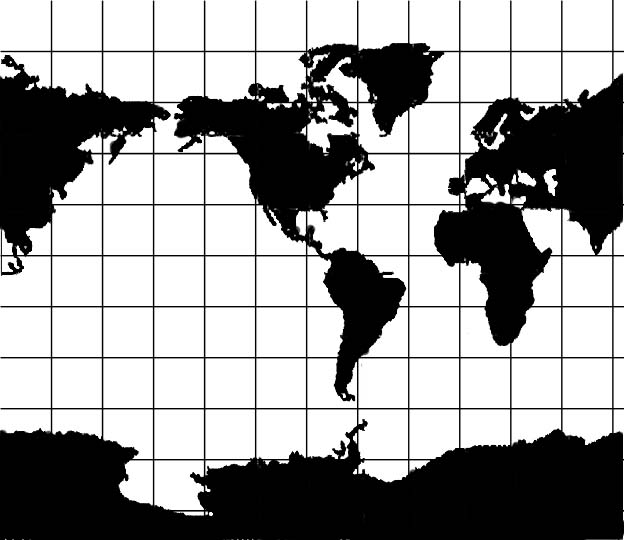|
IntroductionWe know that Christopher Columbus sailed into the unknown looking for a way to circle the globe. Perhaps you have heard that people in Europe were afraid that Columbus, along with the Nina, the Pinta, and the Santa Maria, would reach the edge of the world and tumble off. Though Columbus' voyage was certainly a gamble, he and other educated people in Europe did not believe the world was flat. The myth of their ignorance was created by a well-known, nineteenth-century American writer, Washington Irving. Despite Irving's claim, educated people have known for a very long time that the earth is a sphere. In fact, an early Egyptian geographer and astronomer, Ptolemy, wrote several scientific papers based on a spherical earth back in the first century, about 1400 years before Columbus made his famous voyage.
A flat map over a round ball. Click twice to view animation. (http://erg.usgs.gov/isb/pubs/MapProjections/projections.html) If the world was flat, then map making would be a lot simpler. Because the earth is spherical, mapmakers struggle to accurately portray the world on flat pieces of paper. To understand the problems of creating a replica of the earth on a flat surface, try the following experiment or watch the animation by clicking on the above image and watch the animation of a flat map being wrapped around a ball. As you will see, it takes some significant tucks and folds to make the map lay flat on the ball. Mapmakers have tried all kinds of ways to effectively solve the problem, but all map projections have some drawbacks. You will need these items for the experiment:
Follow these steps: 
You can print the map pictured here for the experiment by clicking the "Print Selection" button.
 
|
About Us | Terms of Use | Contact Us | Partner with Us | Press Release | Sitemap | Disclaimer | Privacy Policy
©1999-2011 OpenLearningWorld . com - All Rights Reserved

